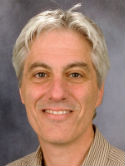Direct evidence for new T-cell generation by patients after either T-cell-depleted or unmodified allogeneic hematopoietic stem cell transplantations Journal Article
| Authors: | Lewin, S. R.; Heller, G.; Zhang, L.; Rodrigues, E.; Skulsky, E.; van den Brink, M. R. M.; Small, T. N.; Kernan, N. A.; O'Reilly, R. J.; Ho, D. D.; Young, J. W. |
| Article Title: | Direct evidence for new T-cell generation by patients after either T-cell-depleted or unmodified allogeneic hematopoietic stem cell transplantations |
| Abstract: | Successful allogeneic hematopoietic stem cell transplantation (HSCT) requires reconstitution of normal T-cell immunity. Recipient thymic activity, biologic features of the allograft, and preparative regimens all contribute to immune reconstitution. We evaluated circulating T-cell phenotypes and T-cell receptor rearrangement excision circles (TRECs) in 331 blood samples from 158 patients who had undergone allogeneic HSCTs. All patients had received myeloablative conditioning regimens and were full donor chimeras in remission. Younger patients exhibited more rapid recovery and higher TRECs (P = .02). Recipients of T-cell-depleted allografts initially had lower TRECs than unmodified allograft recipients (P < .01), but the difference abated beyond 9 months. TREC level disparities did not achieve significance among adults with respect to type of allograft. Measurable, albeit low, TREC values correlated strongly with severe opportunistic infections (P < .01). This finding was most notable during the first 6 months after transplantation, when patients are at greatest risk but before cytofluorography can detect circulating CD45RA+ T cells. Low TRECs also correlated strongly with extensive chronic graft-versus-host disease (P < .01). Recipients of all ages of either unmodified or T-cell-depleted allografts therefore actively generate new T cells. This generation is most notable among adult recipients of T-cell-depleted allografts, most of whom had also received antithymocyte globulin for rejection prophylaxis. Low TREC values are significantly associated with morbidity and mortality after transplantation. T-cell neogenesis, appropriate to age but delayed in adult recipients of T-cell-depleted allografts, justifies interventions to hasten this process and to stimulate desirable cellular immune responses. © 2002 by The American Society of Hematology. |
| Keywords: | adolescent; adult; child; controlled study; child, preschool; middle aged; transplantation, homologous; human cell; major clinical study; t lymphocyte; t-lymphocytes; immune system; hematopoietic stem cell transplantation; age factors; chimera; immunophenotyping; graft vs host disease; lymphopoiesis; lymphocyte depletion; cd45 antigen; allotransplantation; opportunistic infections; hematologic diseases; gene rearrangement, t-lymphocyte; histocompatibility; bone marrow purging; leukopoiesis; humans; human; priority journal; article |
| Journal Title: | Blood |
| Volume: | 100 |
| Issue: | 6 |
| ISSN: | 0006-4971 |
| Publisher: | American Society of Hematology |
| Date Published: | 2002-09-15 |
| Start Page: | 2235 |
| End Page: | 2242 |
| Language: | English |
| PUBMED: | 12200390 |
| PROVIDER: | scopus |
| DOI/URL: | |
| Notes: | Export Date: 14 November 2014 -- Source: Scopus |
Citation Impact
Related MSK Work









